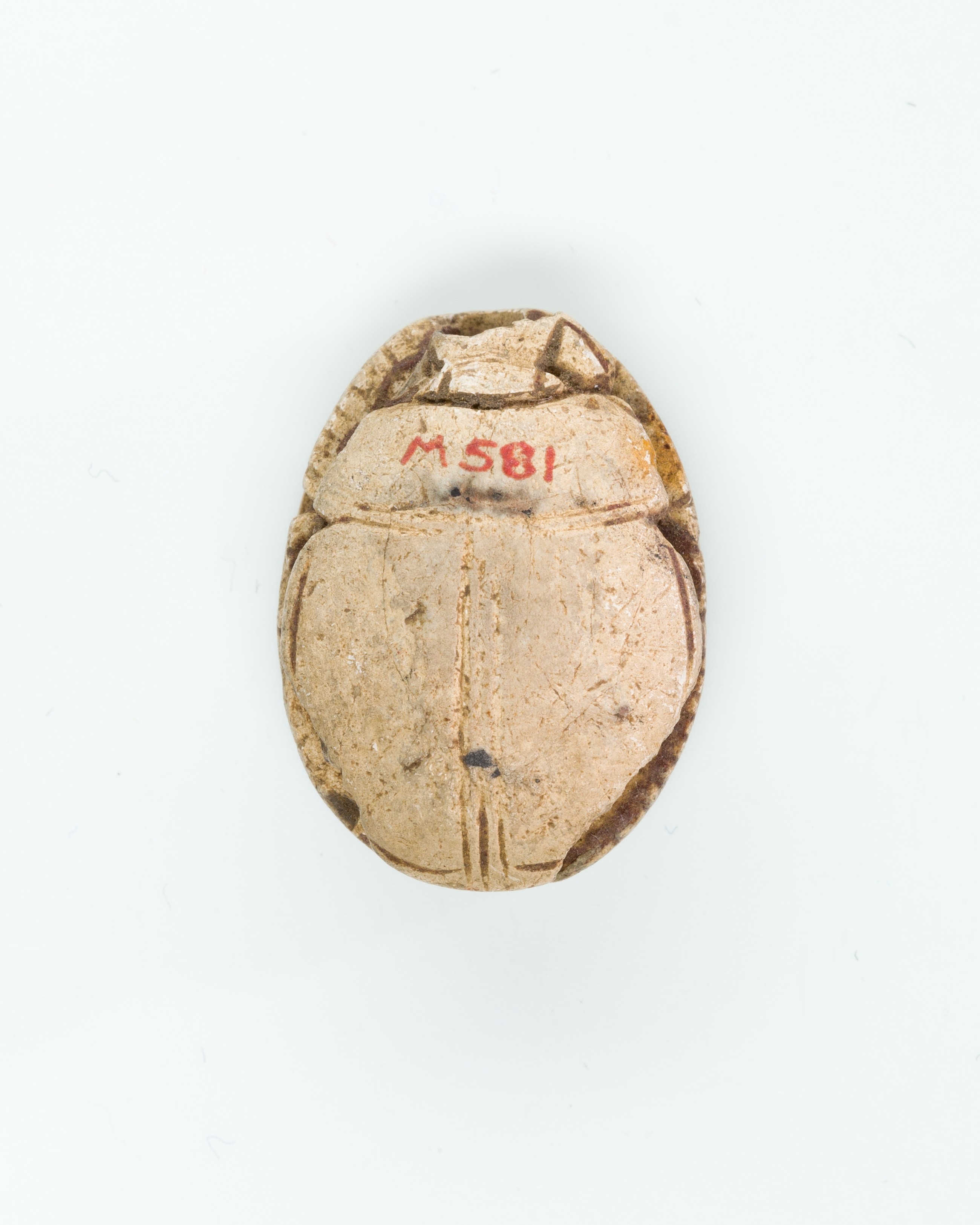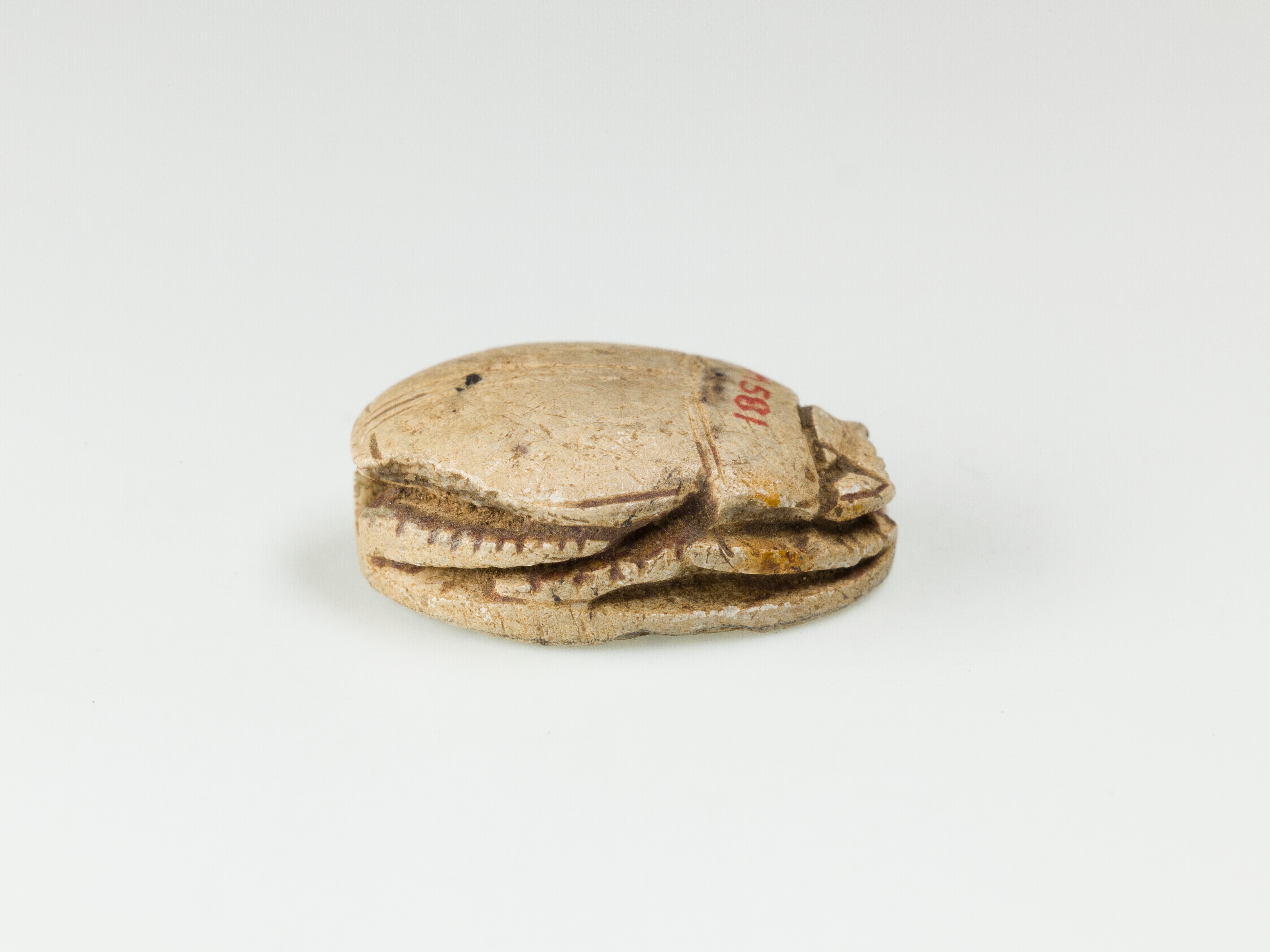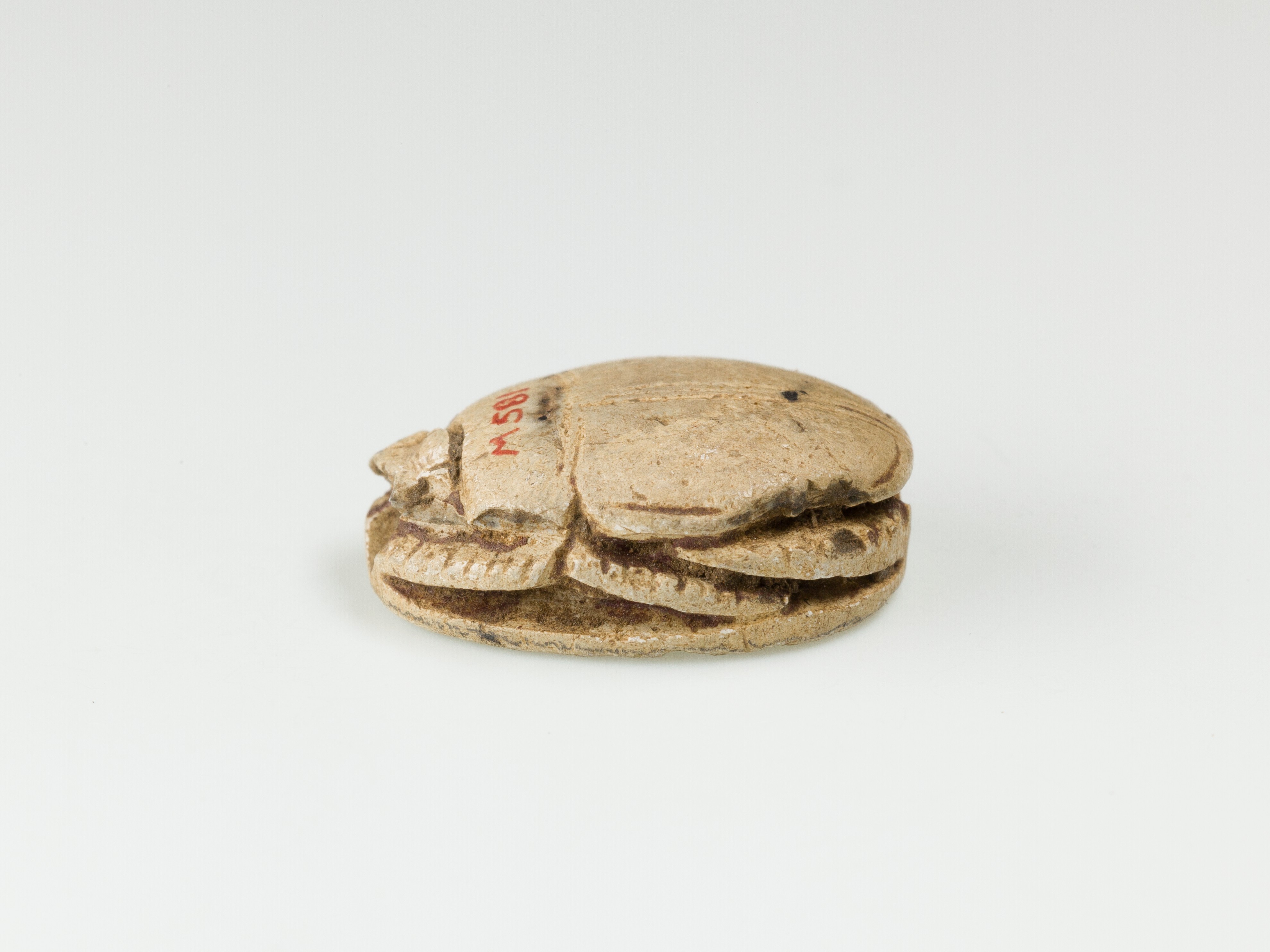Scarab with kneeling Nile god before obelisk
New Kingdom or early Third Intermediate Period
The underside of the scarab shows the Nile god Hapy, identified by his headdress of papyrus stalks. He is the personification of the annual inundation and therefore also one of the ancient Egyptian fertility gods. He sits on his knees, offering a hes-vase, the hieroglyph of praise, while he faces an obelisk. The obelisk is one of the symbols of the sun god and can thus stand for Amun.
Within the monument, however, one can also discern small hieroglyphs forming the throne name of pharaoh Thutmose III, Menkheperre (Dynasty 18, ca. 1479-1425 B.C.). He was venerated after his death and the name of this great ruler continues to appear on stamp seals long after his reign, even into the Late Period (ca. 664-525 B.C.).
Due to rights restrictions, this image cannot be enlarged, viewed at full screen, or downloaded.
This artwork is meant to be viewed from right to left. Scroll left to view more.





